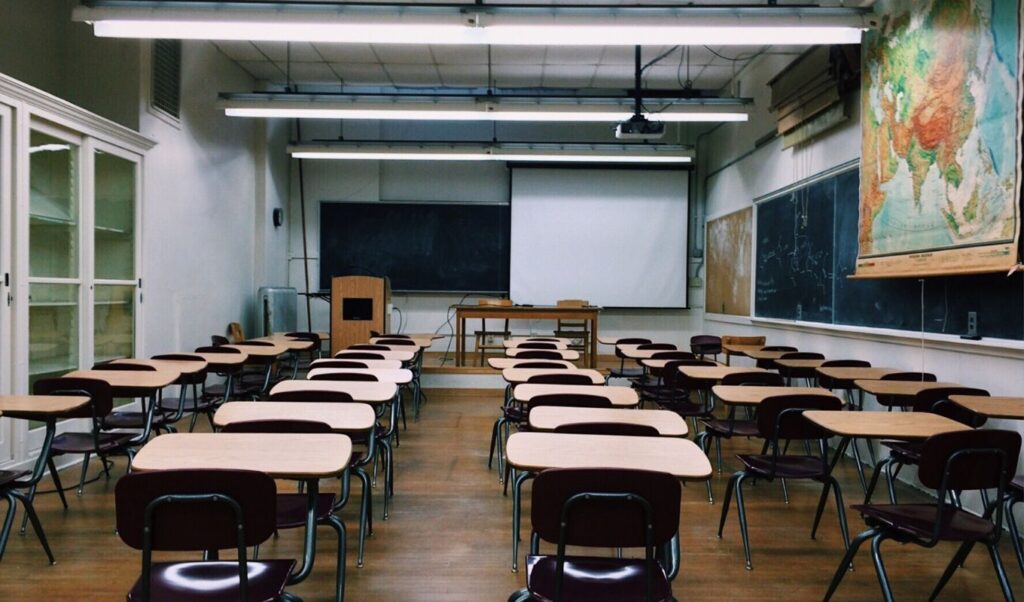The new pilot educational program “AI inSchools” will bring “ChatGPT Edu” to schools, starting this December for teachers and from March 2026 for 10th and 11th grade students. This is the special version of ChatGPT designed exclusively for education.
Read: Dating in the age of artificial intelligence: How ChatGPT is changing the way we fall in love
ChatGPT in schools with the new “AI inSchools”: Who participates
A total of 20 schools nationwide will participate in the pilot implementation of the program. According to the Ministry of Education, the goal is to give all participants the opportunity to acquire skills and practical tools for responsible, creative, and pedagogically sound use of AI in teaching and learning.
These include 14 model and experimental high schools nationwide, as well as 6 high schools from the public Onassis schools that have been operating since last September. After the first pilot implementation of the program, and if it proves successful, the Ministry’s intention is to gradually expand it to more schools nationwide, so that Greece, in cooperation with major technology providers, can become a model for understanding and implementing these new technologies in education. The program’s goal is for teachers and students to understand and be able to use artificial intelligence in a safe, supportive way that is adapted to their individualized educational needs.
“ChatGPT Edu”: “New and safe educational environment”
Education, Religious Affairs and Sports Minister Sofia Zacharaki described it as “an important step toward the school of the future” when speaking to APE-MPE. “With the AI in Schools pilot program, we are bringing generative artificial intelligence into classrooms for the first time as an ally of education, not as a substitute,” she emphasized, adding: “We want our teachers and students to get to know, understand, and use artificial intelligence with responsibility, creativity, and critical thinking.”
As the Minister noted, the “ChatGPT Edu” version is expected to offer “a new and safe educational environment adapted to teaching needs.” “Through this, our teachers gain practical tools to enrich their lessons and enhance children’s creativity, collaboration, and critical thinking,” she explained. It’s worth noting that the program is implemented by the Ministry of Education, Religious Affairs and Sports, in cooperation with OpenAI and the Onassis Foundation. Regarding this collaboration, Ms. Zacharaki emphasized that it represents “an example of how innovation can meet education when there is a common vision and common action.” “Because education is not a spectator in the age of artificial intelligence. It is the protagonist. It is an ally of the teacher and an opportunity for every child to learn, create, and succeed,” the Minister concluded.
Specifically, teachers and students will receive personalized training from “TheTipping Point in Education” organization regarding the use of all capabilities of OpenAI’s models. They will also have access to the latest AI models through a specially configured version, “ChatGPT Edu,” which is exclusively adapted for classroom use. The implementation is carried out in cooperation with the Onassis Foundation, which will fund the program.
The 3 + 1 stages of implementing “AI in Schools”
During program implementation, participating teachers and students will have access to “ChatGPT Edu,” a special version of ChatGPT designed exclusively for education. Teachers will receive specialized training, while the tool will be used gradually in the classroom, always under teacher supervision and guidance. More specifically, according to APE-MPE information, the “AI in Schools” pilot program has a three-phase implementation schedule for the current school year, plus one for the coming year:
- Teacher training (October – November 2025): Selected teachers will participate in training sessions to familiarize themselves with and understand “ChatGPT Edu,” become acquainted with its basic capabilities, and learn how to safely integrate it into teaching and administrative tasks.
- Initial use by teachers (December 2025 – February 2026): Teachers are trained to use “ChatGPT Edu” in their daily routine and how it can be gradually integrated into the classroom, with practical scenarios and support.
- Training for gradual use by students (March – June 2026): Teachers attend training sessions on how students can use “ChatGPT Edu” under teacher supervision for assignments, projects, and creative activities, enhancing critical thinking, creativity, and collaborative learning.
- Use by teachers and students (2026-27 school year): Teachers and students use all capabilities of the new tools offered by ChatGPT Edu. According to the Onassis Foundation team, which is responsible for strategic planning and funding the program, emphasis is placed on responsible use and transparency, and on training teachers as designers of the learning experience, as they will be the ones to give students the tools for proper use of generative artificial intelligence tools. “It’s important for teachers to be able to define the framework for AI use, ensuring it’s ethical, reliable, and safe,” they characteristically told APE-MPE.
As they emphasized, particular attention is paid to protecting the personal data of teachers and students as a basic priority, along with responsible and safe use of “ChatGPT Edu.” It’s noted that student licenses—estimated to be about 5,000—will not be distributed this year, but after successful completion of the first three implementation phases, when teachers will be able to “guide” children not just to use artificial intelligence—this is already happening, as they emphasized—but to ensure “this use occurs within a pedagogical and educational framework, providing them with the skill tools they need to know how to function in the new technological reality and understand it.”
What is ChatGPT Edu
More specifically, ChatGPT Edu is a special artificial intelligence platform developed for use in schools and universities. As the Onassis Foundation team explained to APE-MPE, this program provides a safe and closed environment without advertisements, allows account management per school with roles for teachers and students, provides special access settings by age or grade, and gives teachers the ability to create customized learning tools (Custom GPTs) and lesson setup.
It was clarified that user data is not used to train the models, while everything is protected through encryption and GDPR compliance. Teacher participation is voluntary and resulted from a call for interest for those wanting to participate in the program, taking place after information and consent. Meanwhile, the Ministry emphasizes that there are explicit contracts with OpenAI prohibiting the sale or sharing of data, while a Data Protection Impact Assessment (DPIA) is being prepared as required by European GDPR regulation, and the Ministry’s Data Protection Officer (DPO) has been called upon to continuously evaluate the program.
According to APE-MPE sources close to the Ministry of Education leadership, as the program evolves, its implementation will be closely monitored and the possibility of gradually expanding “AI in Schools” implementation to more schools will be examined. Meanwhile, a special working group has been established within the Ministry to evaluate how artificial intelligence can be meaningfully integrated into schools as a valuable tool for teachers.




